
This month we follow our Creative Director Dudley and the team on their visit to EuroShop 2023.
Some of you may have already seen these highlights, but if you haven’t – Click here to see how a new take on existing technologies can engage, excite, and activate the imagination of shoppers.
This year the themes of discovery, play, intrigue, and user creation really energised our team. Meanwhile, the theme of sustainability remaining high up on the agenda ensured they were left reassured that important issues weren’t being ignored.
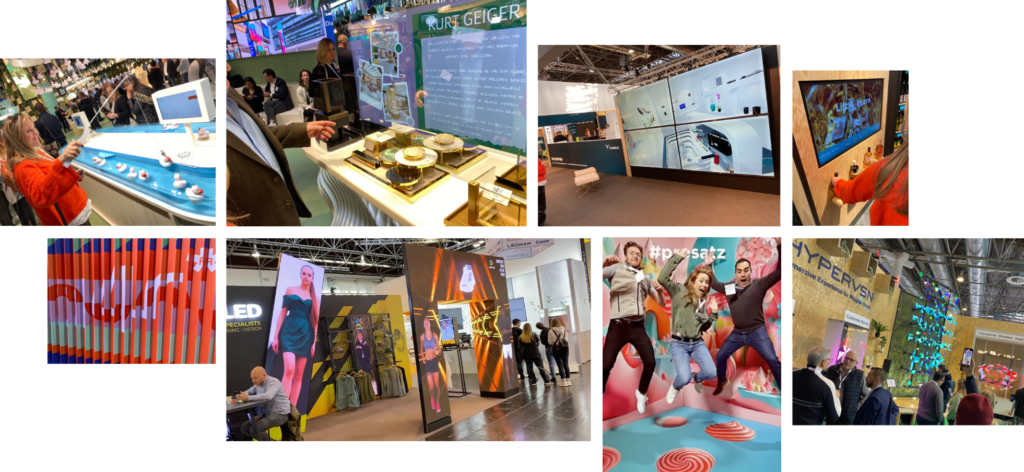

Personalised experiences can revolutionise how shoppers engage with brands.
Personalisation sits at the heart of retail in 2022. Personalised experiences need to be interactive, resonate with customers in real time and be relevant, educational and informative.
In this article we discuss why personalisation is so important to physical retail and how it can be used to drive shopper attraction, engagement and conversion.
Why is personalisation so important?
For the answer to that we need to turn to the online world. The likes of Amazon have conditioned consumers to expect personalised experiences, whether suggestions based on previous purchases, preferences based on demographics or personalised messages and offers.
McKinsey and Co go as far as speculating that personalisation may now be regarded as a “hygiene factor”, whereby customers take it for granted to such an extent that if a retailer gets it wrong, they risk losing the customer.
How are personalised experiences being used in physical retail?
2022 is predicted to be the year when personalised experiential retail really takes off.
The key is the interaction between physical product, digital technologies, smartphones and data.
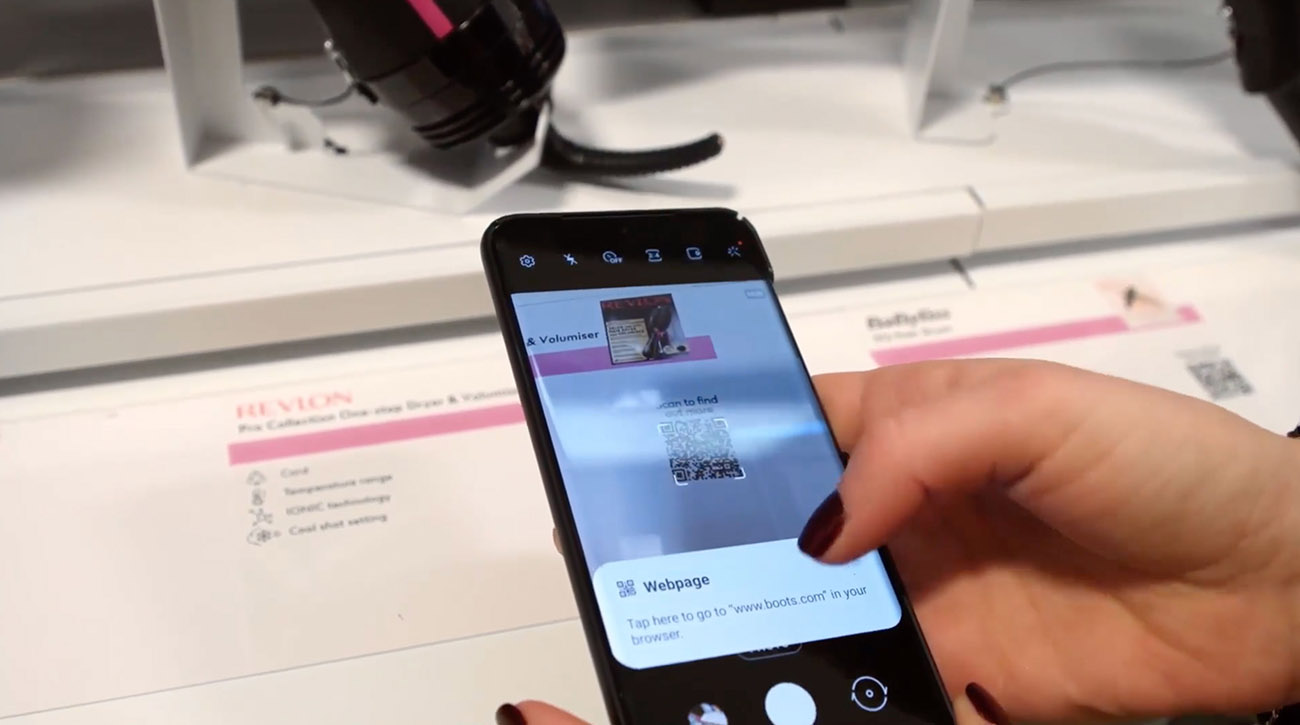
Barcodes and QR codes
Retail display specialists recognise that shoppers are increasingly willing to use their smartphone to interact with barcodes and QR codes instore.
This has enabled the delivery of personalised experiences via the scanning of a QR code. Shoppers can interact with digital screens to answer questions on their phone which then produce personalised answers and recommendations on the instore display screen.
Retailers and brands can then intelligently pull back data and analytics to control content and experiences remotely anywhere in the world from a single software platform. It also enables retailers to use data intelligently to improve shopper experience.
By using more data, experiences can be personalised further using technologies which can recognise the shopper through:
- Their use of an app e.g. brand’s app
- Their location e.g. geo fencing
- Their personal details e.g. name, age, gender
Data gathering and insights
As described above, personalised interactive displays can be used to derive data intelligently and drive value.
By using 3D creative and well-engineered physical displays to create integrated experiences, data can be gathered on how customers respond content and experiential displays, and how they move around the store. Interactions can be monitored, along with dwell times and locations.
As a next step, the data can be used to refine and personalise the customer experience and in-store journey. Understanding how shoppers are interacting with displays enables retail managers to drive increases in ROI by generating small increases in interactions or dwell time.
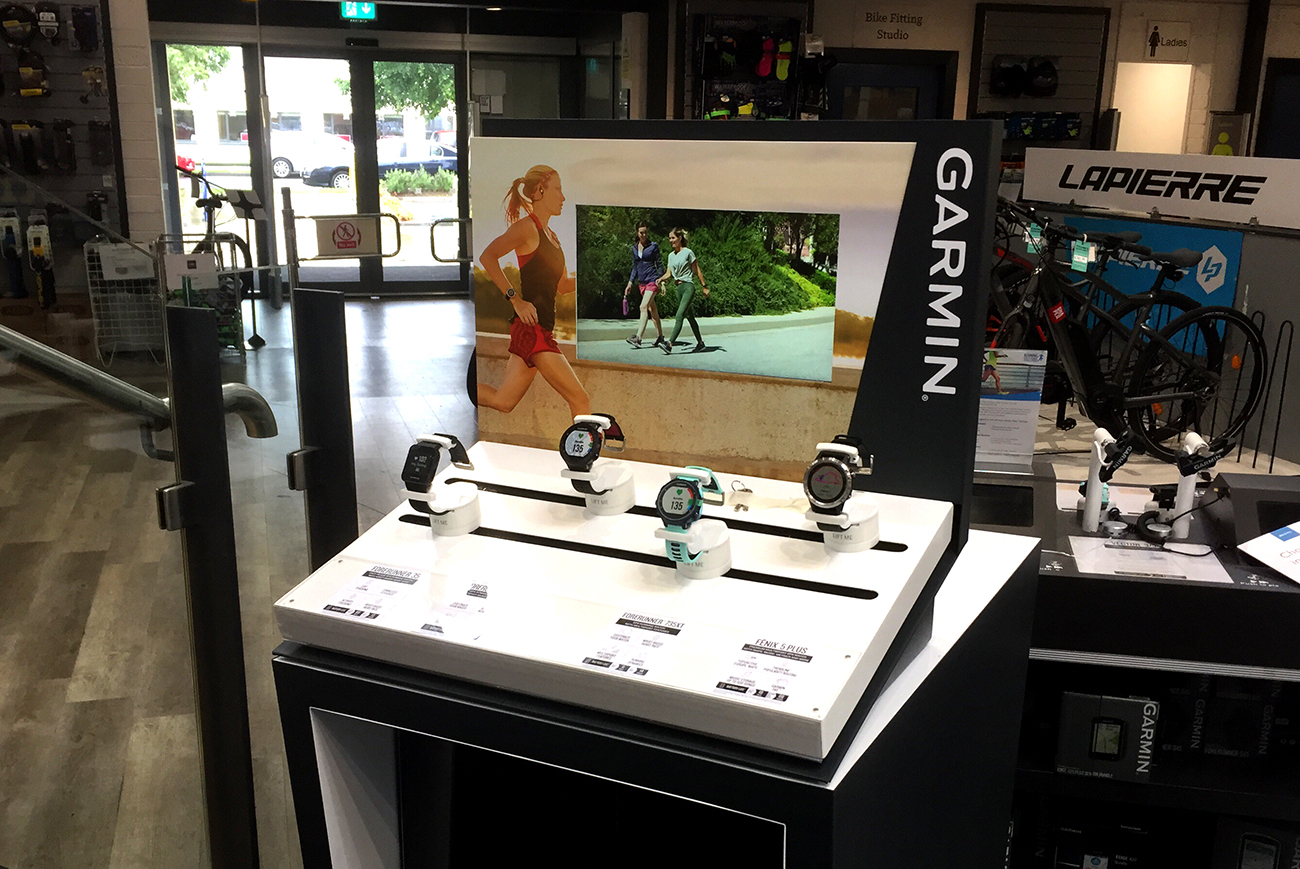
Case study
For Garmin, we monitored lift and learn technology interactions on a range of different products, enabling analysts to interpret data and draw conclusions.
When compared to in-store sales data, the data showed that after trying out premium products, shoppers often go on to purchase a related product of lesser value. We worked with Garmin to change the digital display content and messaging to emphasise the benefits of the higher value product, resulting in an uplift in sales.
Evolution of expectation
Increasingly, shoppers visit a store to gain insight into a product they’re aware of or interested in, because in so doing they can get more than they’d learn from an online page or static printed graphic.
Many of today’s shoppers are already armed and educated before they go to a store, unless the products are traditionally seen as ‘impulse’ purchases.
Yet through personalised experiences, what have for years been regarded as impulse purchases can be transformed into ‘destination’ purchases that shoppers head to a store specifically to buy.

Connected environments
For true personalisation, physical display must be integrated with digital technology to create an initial “attract moment”, engage the shopper, educate and inform the customer and ultimately close the loop and convert them into a sale.
This attract-engage-convert journey may start online, lead to a personalised in-store experience using integrated digital and physical media with a product and then ultimately finish with an online purchase.
This multi-phase, multi-dimensional shopper journey is enabled and enhanced throughout by collection and analysis of data and underpinned by hands-on experience comprising educational and personalised information.
Far from shoppers being disappointed by a lack of product stock in-store, the “no stock” store is now a destination in itself for shoppers to experience products they have discovered online, and which with a QR code scan can be ordered for delivery at home.
Delivery will soon be within hours or minutes and may well be by drone.
“The future of retail will be a cashless, convenient and a personalised shopper experience. Easy, engaging with no friction.”
Leon Turney
Next steps
Ready to personalise your retail display experiences for your shoppers?
Retail displays should be designed to offer personalised, hands-on, educational and informative experiences. Displayplan helps its clients develop personalised retail experiences that appeal to the senses and emotions of target shoppers. We design your retail display to offer shoppers the opportunity to engage with your brand, experience your products and become invested in them.
At Displayplan, we’re retail display experts. Speak with one of our specialists on 01462 88 6000 or email info@displayplan.com.
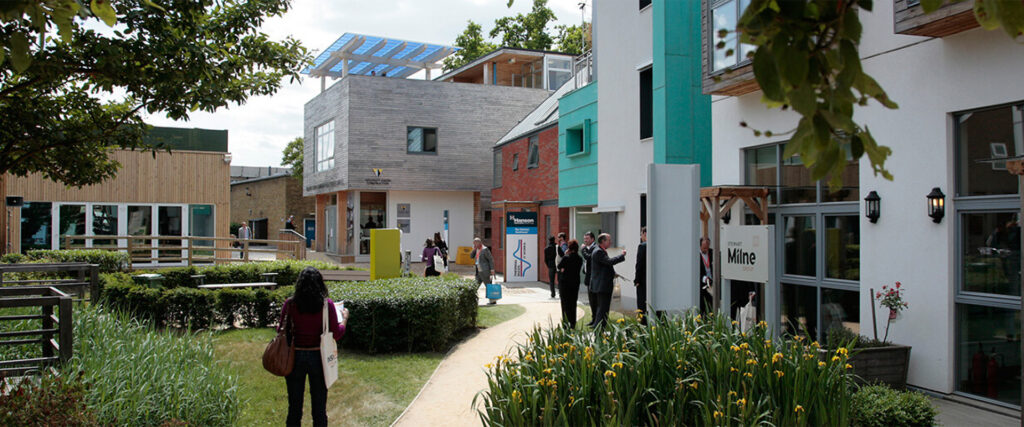
How do you measure the environmental impact of your retail store displays, and how can you reduce the environmental impact if you can’t measure it?
At Displayplan we use the Low Impact Shopfitting Tool (LIST) to measure and reduce the embedded carbon in our display designs. The foundation comes from BRE/BREEAM’s deep database of materials and Life Cycle Assessments (LCA) providing world-class data used in the LIST assessment tool.
Download this guide to learn more about LIST
LIST – PDF Download
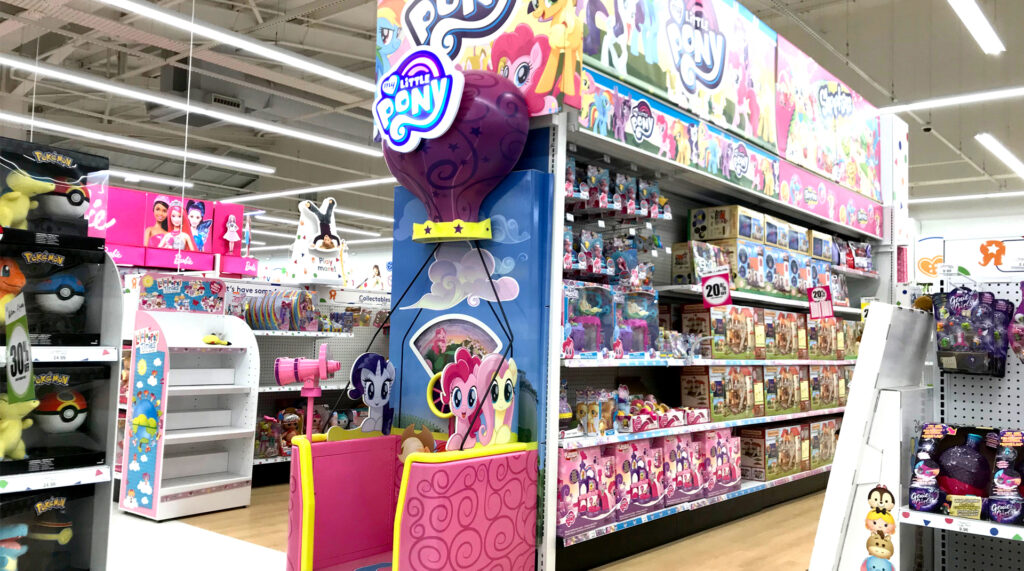
Experiential retail display is widely used to influence shopper behaviour through entertainment and/or education in-store.
Designing in-store product displays that appeal to shoppers’ senses doesn’t just attract and engage them whilst in-store; it also enhances their shopping experience and helps drive sales.
Recently, a survey of over 5,000 fashion buyers showed 44% of people were more motivated to visit a physical shop that gave personalised offers to use in-store and linked to digital experiences.
This, along with countless more statistics, shows the importance of integrating on-line with off-line, technology, entertainment, connecting seamlessly for experiences that enhance digital and physical shopping.
For retailers and brands, experiential display solutions must centre around performance, both for the shopper and bottom-line sales, incorporating elements of interactivity and originality while creating a relationship between the shop/product and the consumers.
There is one key ingredient that helps ensure these elements are met.
Creativity.
Designing retail experiences is about thinking outside the box, being unique and promoting innovation.
What does it mean to be different?
In-store experiences can be physical, digital or a combination of both. The way that these interact seamlessly is important to the shopper journey. Overall, the shopper should be given opportunities to touch, feel and interact with products while in the store in a memorable way.
Yet being different doesn’t always mean doing everything new.
Shaking up the norm and including relevant experiences within physical designs can be a great way to add a wow factor to your in-store marketing. Creating unique, creative, and well-thought-through experiences provides exciting, unexpected moments that help reflect your brand and messaging, putting your product in the spotlight.
Why your customers seek unique experiences
The COVID 19 pandemic has changed shopper behaviour. Retail has had to change, it’s now a complex ecosystem of physical spaces and digital consumption. The purpose extends far beyond displaying and selling products and services.
Shopper behaviour has driven the need to merge social interactions, fun, entertainment, and learning experiences.
In February 2021, up to 71% of people were buying more online than they ever had before. Now, with lockdown restrictions lifted, businesses are faced with more pressure to encourage shoppers back to the high streets.
Where online retail cannot compete, is in offering hands-on, in person experience. Experiential retail displays offer shoppers the chance to interact with products, allowing them to touch, feel, hear, and smell, enhancing their retail experience through entertainment and education rather than simply enabling a purchase.
The role of stores has evolved, turning them into places that offer meaningful interactions with customers. The entertaining and often education and playful experiences which are only available in-store is rapidly becoming a fixed part of shoppers’ expectations.
Physical retail stores are only part of a wider system of shopper experiences that must connect seamlessly at all touchpoints.
How you can harness more creativity in your next retail experience
At Displayplan, we are pragmatic in our approach to creative ideas and solutions. First, we make sure we understand the problem, client goals and objectives.
Then we apply a ‘what’, ‘why’ and ‘how’ methodology that justifies our thought process, answers the client brief and offers additional insights that enhance the final solutions.
We always begin the creative process by considering all the steps of the whole project, right through to end of life recycling and reuse. This ensures we create ideas at the start that can be realised and look just like the first visuals.
By working in this way, we aim to make at an experiential display solution that:
- Delivers an enhanced shopper experience
- Achieves our client’s objectives and solves the problem
- Incorporates our sustainable design thinking approach by including materials that can be reused or recycled at end of life.
Creativity at Displayplan means thinking through relevant solutions to the challenges set for us by our clients. Not just design-led ideas, but the ability to see through the issues and navigate the complete project process from sketch to store.
Yet while creative idea generation processes are in themselves exciting, the limiters faced by many retailers have to be considered. Creating great-looking, engaging retail display concepts is only part of the story; the other side is being able to implement these ideas within the confines of client budgets. This is the art of realising solutions.
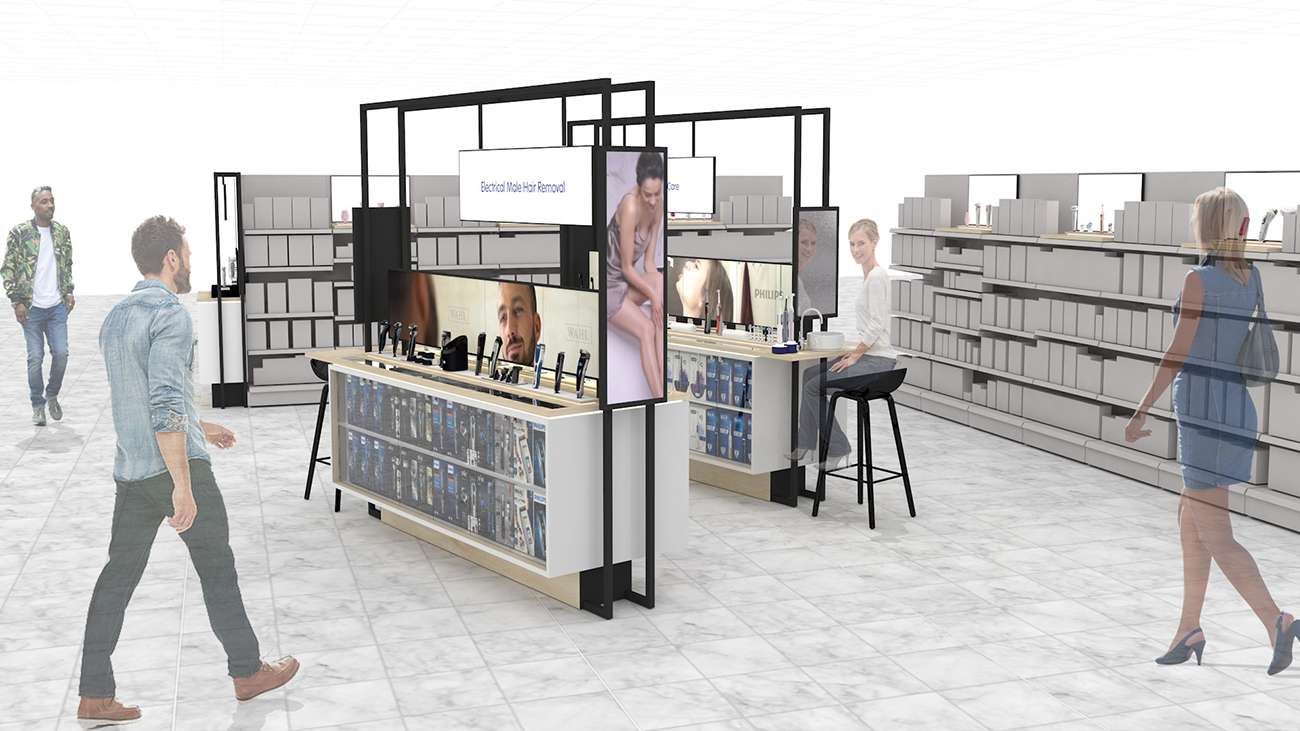
The results of differences in experiences
We continually watch what’s happening in the market, keeping in touch with and understanding shopper behavioural change.
Our designers blend creativity with insights to form the reasoning for relevant ideas and design directions that respond to changing global trends. Keeping an open mind and promoting curiosity gives our team new evolving approaches to what we do.
This approach has inspired a range of highly innovative and successful experiential retail displays, such as Hasbro’s immersive in-store My Little Pony brand experience for children. We built a custom 3D immersive virtual reality experience of the world of My Little Pony with 360-degree content, delivered through a mobile phone integrated within play binoculars. This award-winning solution was designed and custom-built for retail stores, including a built-in fan and sound effects.
More recently, Displayplan developed an award-winning play table concept designed to showcase all of Boots’ electrical beauty products in one area. Here, we used a blend of relevant integrated digital and physical displays designed to engage, educate and excite shoppers, offering a one-stop in-store destination for the full electrical beauty product range.
The concept provides a hands-on experience for shoppers to touch, feel and try high-value electrical beauty products, including men’s and women’s shaving, hair care and electrical dental products. It also provides analytics and reporting to derive an understanding of shopper engagement.
And finally, yes, we did say “award winning”. The Boots experiential play table display design received the POPAI Innovation Gold Award in 2021. We were pleased about that.
Ready to take your retail display to the next level?
Retail displays should be designed to offer hands-on, educational, and retailtainment experiences. These appeal to the senses and emotions of the target shopper, whether it be the child whisked away to the land of Equestria for My Little Pony or the shopper at Boots who wants to handle and compare electrical beauty products.
Your retail display should offer shoppers the opportunity to engage with your brand, experience your products and become invested in them. These factors all influence brand awareness, customer loyalty and sales.
At Displayplan, we’re retail display experts. So, if you want to collaborate on a retail display that’s out of this world, speak with one of our specialists on 01462 88 6000 or email info@displayplan.com.
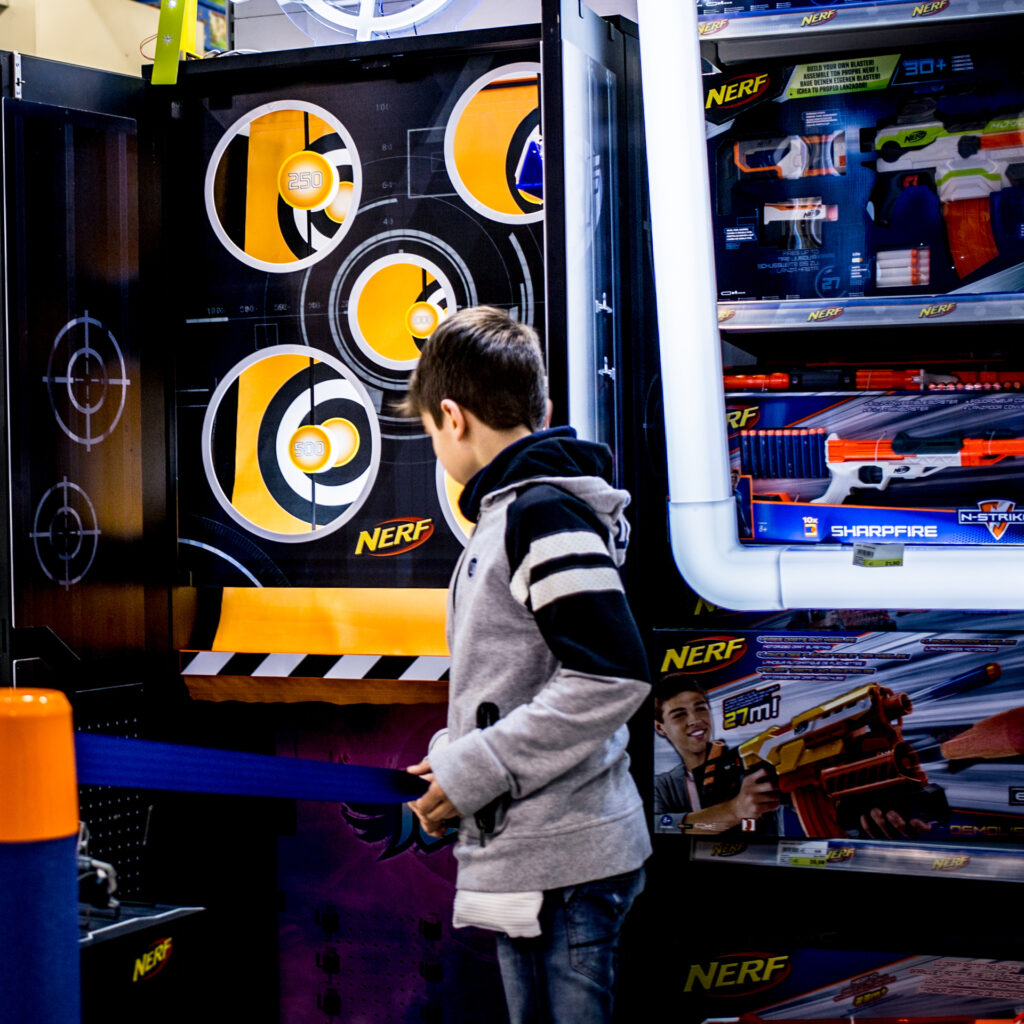
Retail displays that perform for shoppers by entertaining, delighting and educating them also result in ‘sales performance’ for retailers.
The concept was named – perhaps somewhat awkwardly – as ‘retailtainment’ by American sociologist George Ritzer in 1999 in his book entitled “Enchanting a Disenchanted World: Revolutionizing the Means of Consumption”.
Defined as “the use of sound, ambience, emotion and activity to get customers interested in the merchandise and in the mood to buy”, retailtainment is perhaps better described today as “experiential display” – though it certainly incorporates a strong element of ‘show business’.
What is experiential retail display?
The concept of experiential retail display is that the shopper’s in-store behaviour can be influenced by means of entertainment and/or education. Designing in-store product displays to appeal to shoppers’ senses not only attracts and engages them whilst in-store; it also enhances their experience and drives sales.
Music retail is a great example, and the announcement by iconic music brand HMV in July 2021 that it was returning to high street store investment suggests this is true. Speaking of his firm’s intention to open 10 new UK stores, including a London flagship, HMV CEO Doug Putman said:
“People obviously love going out shopping, they like touching and feeling and that’s something that online is not going to replace.”
Why retailers are turning to experiential display
For obvious reasons, the Covid-19 pandemic accelerated an already ongoing shift from bricks and mortar retail to online retail.
According to Statista, 71% of people were buying more online than ever before by February 2021, but this figure was already as high as 40% 12 months earlier in March 2020, when the first lockdown restrictions truly began to bite.
As the COVID lockdown lifted, retailers faced more pressure to find ways of making bricks and mortar spaces more appealing in order to tempt shoppers back into malls and high streets.
Against the convenience of order and delivery, transactional speed and choice offered by online retail giants, high street retailers need a unique sales proposition (USP).
And that’s about giving shoppers the opportunity to touch and feel products. While doing so, they can enhance the retail experiences through entertainment and education rather than simply facilitating the purchase.
Most analysts agree that experiential display is going to play a huge role in the future of in-store retail.
Where’s the proof that experiential display works?
Research shows that visitors to shopping centres now expect a fully-fledged experience rather than just retail convenience.
For retailers and brands, experiential display solutions must centre around performance both for the shopper and bottom-line sales, incorporating elements of:
- Interactivity – forging memories linked to a store and experience of its products
- Originality – marking a store out as worth visiting over its competition
- Attachment – creating a bond between the store/product and shoppers.
Retailers who get the experiential elements of their in-store mix right can expect the following benefits:
- Improved footfall
- Longer in-store dwell time
- Enhanced brand loyalty
- Increased sales – research has shown that consumers are more likely to want to own products they’ve held or interacted with
- Strong reputational value through word of mouth
- Greater integration between online sales and offline experiences.
Here at Displayplan we’ve been working at the forefront of this shift, designing, manufacturing and installing retail displays which offer the kind of full spectrum experience which retailers and their customers want.
These display solutions date back to 2017, when Displayplan were involved with the earliest stages of experiential retail.
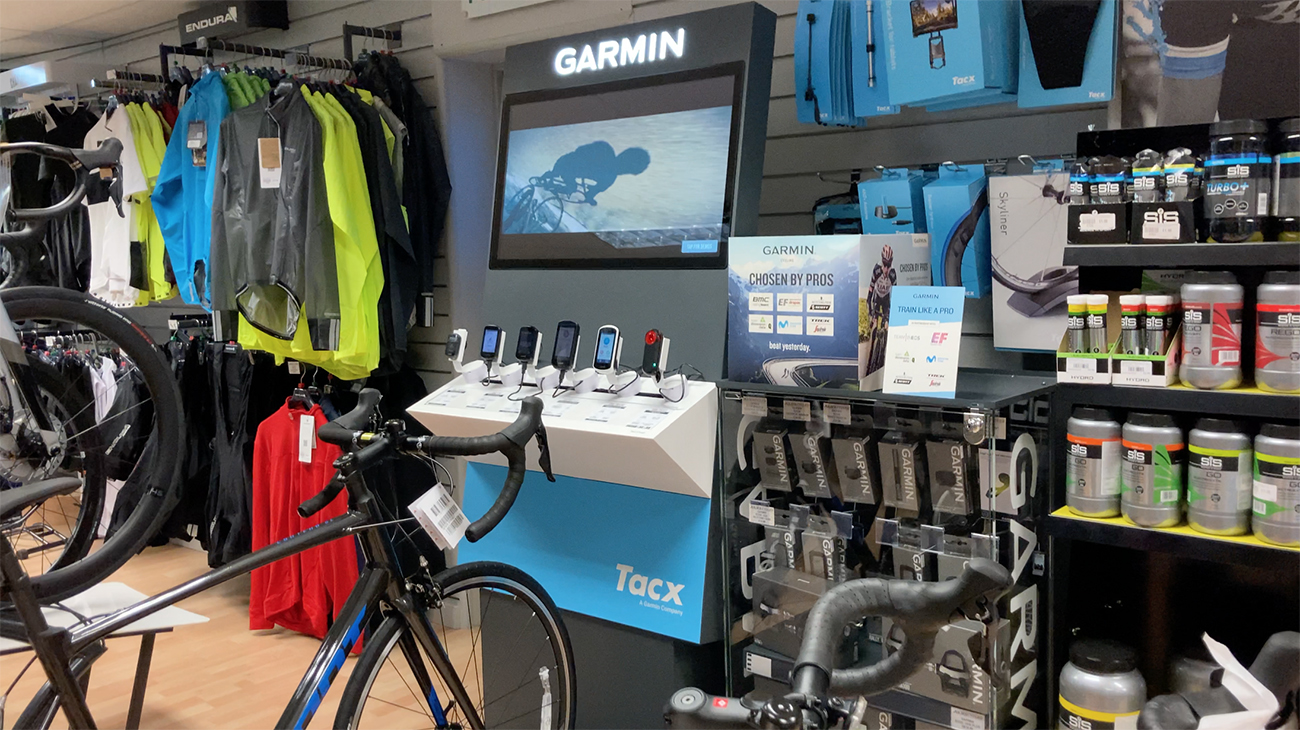
Garmin TACX Demo station
The Garmin TACX is turbo trainer is designed to provide a realistic indoor cycling work out experience with a realistic ride feel.
This experiential display for Garmin centres around a floor-standing large screen display connected to the TACX indoor training station with a bicycle.
Key experience features:
- Shoppers can test the demo bike out as well as their own work out performance
- As well as displaying performance data when shoppers lift products such as on-bike monitors, wearables and lights from the display, the screen activates to display learn and compare content
- For retail brand managers, display activity data is captured and analysed through the Connie content management platform.
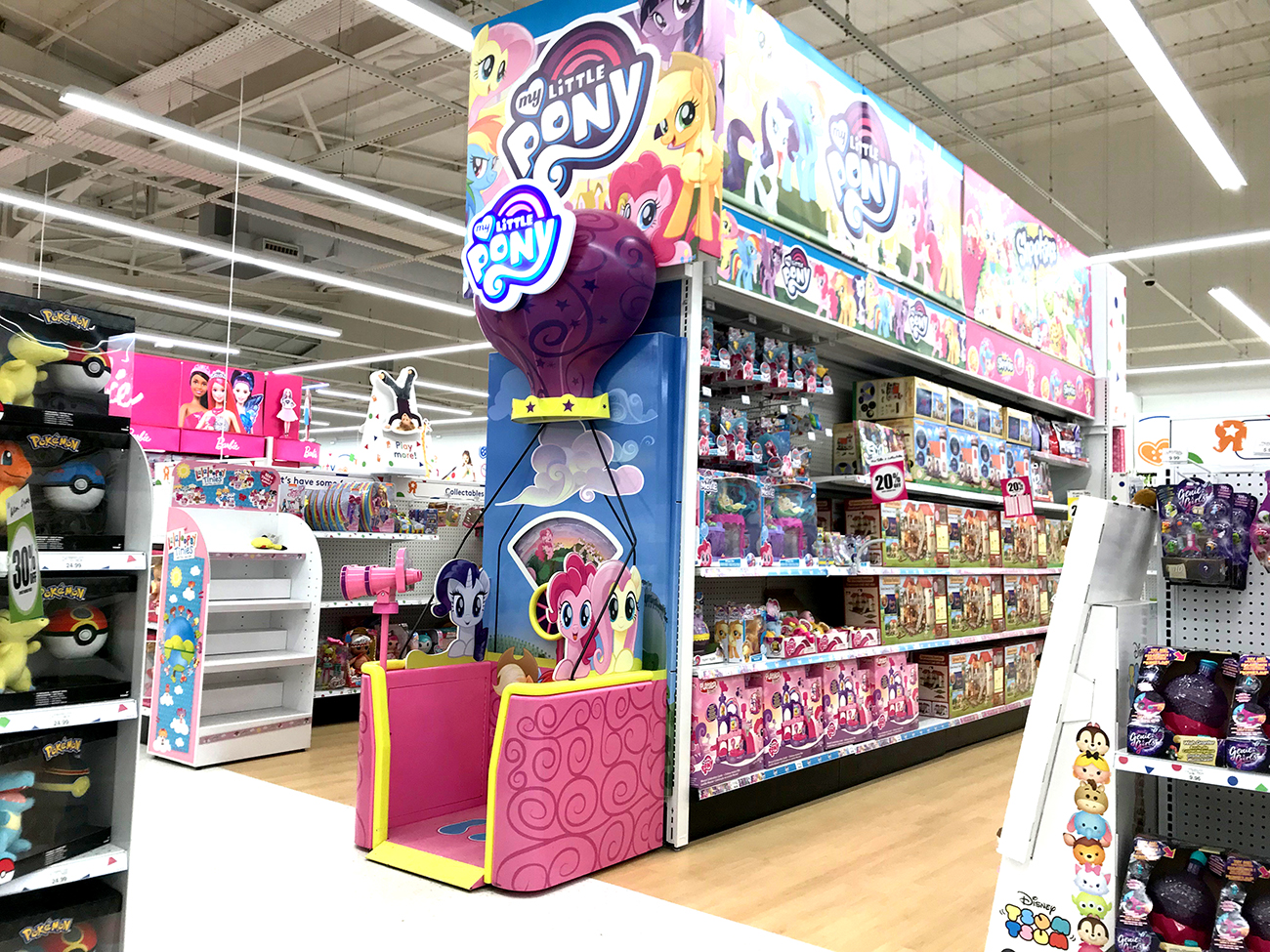
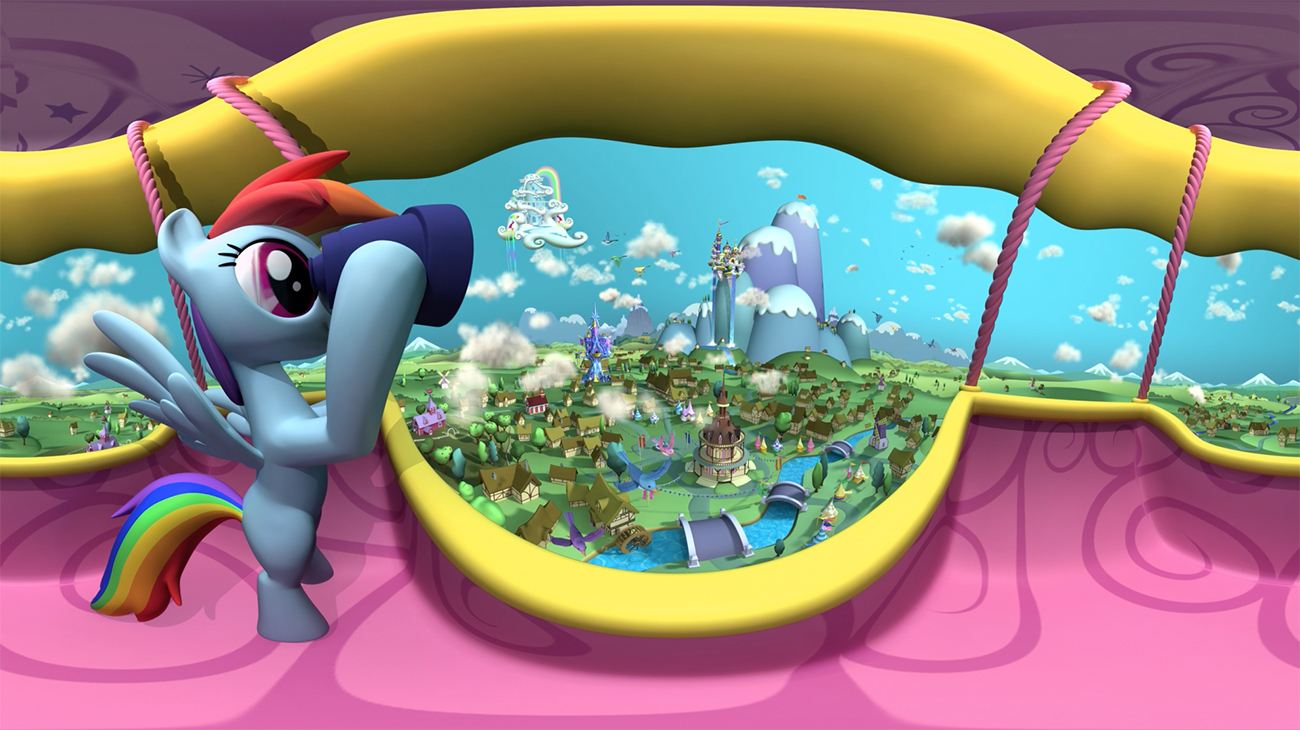
My Little Pony Platinum Endcap
The My Little Pony toy line was launched by Hasbro in 1982 and continues to delight children in the 3 to 5 years age group.
For this experiential display, Displayplan devised an end of aisle display designed for big box and hypermarket stores. Look through the binoculars and become immersed in the VR experience of My Little Pony world as you float in the ballon.
Key experience features:
- Realistic experience of the My Little Pony world for children while in-store
- Recreation of a hot air balloon basket
- Simulated flight over Equestria, the land of My Little Pony, complete with realistic air flow.
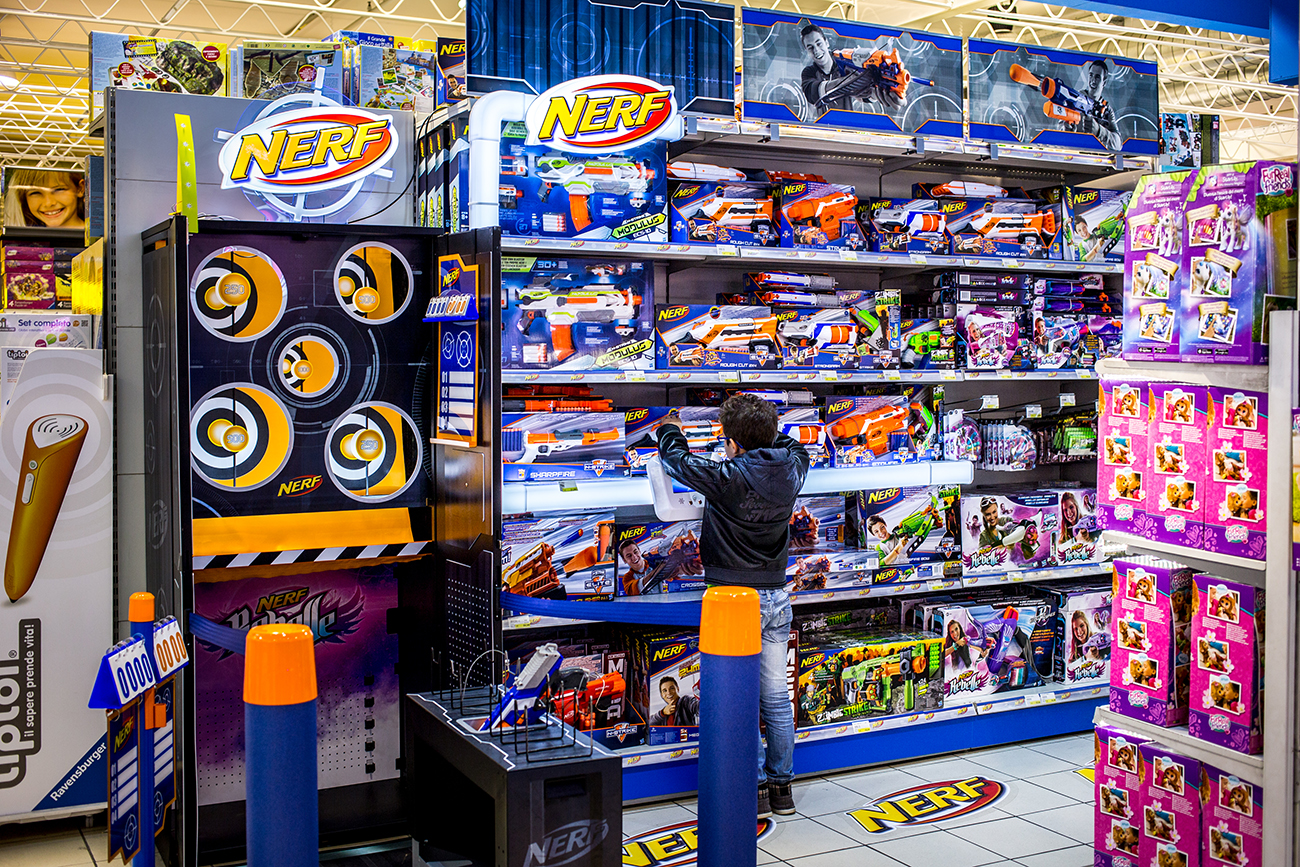
Nerf Blasters
The NERF range of toys have entertained generations of children and teenagers and include an ever-evolving range of foam dart and water blasters.
In this display, both junior and adult shoppers were offered the chance to experience Nerf blaster products in a fun, yet safe and controlled environment.
Key experience features:
- Ability for kids and adults to try out their Nerf blaster skills with targets and compete with each other in a fun and entertaining manner
- Five tethered Nerf blasters
- Backdrop which returns darts to users.
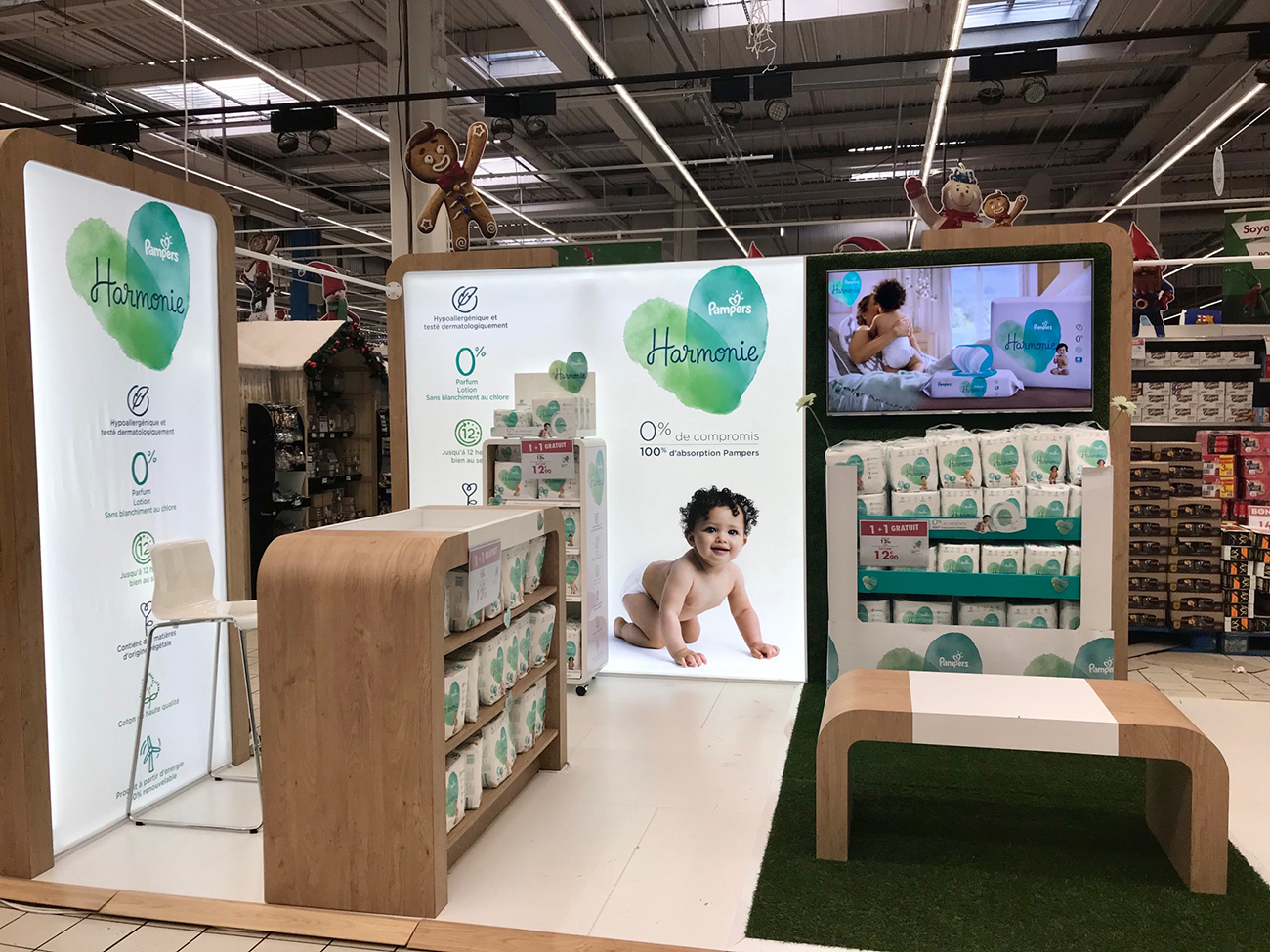
Pampers pop-up shop
The Pampers name has long been synonymous with disposable nappies. This pop-up shop display was designed by Displayplan to give shoppers the chance to step out of the main shop and into a dedicated space designed to showcase Pampers products.
The goal is to provide target shoppers with the chance to touch and feel Pampers product, using various media to educate and inform shoppers and drive engagement.
Key experience features
- High impact design featuring a large hanging mobile, light boxes, large images of babies and large format screens
- Targeted, educational content displays
- Options for shoppers to view integrated learning videos, touch and feel Pampers products or interact directly with product experts.
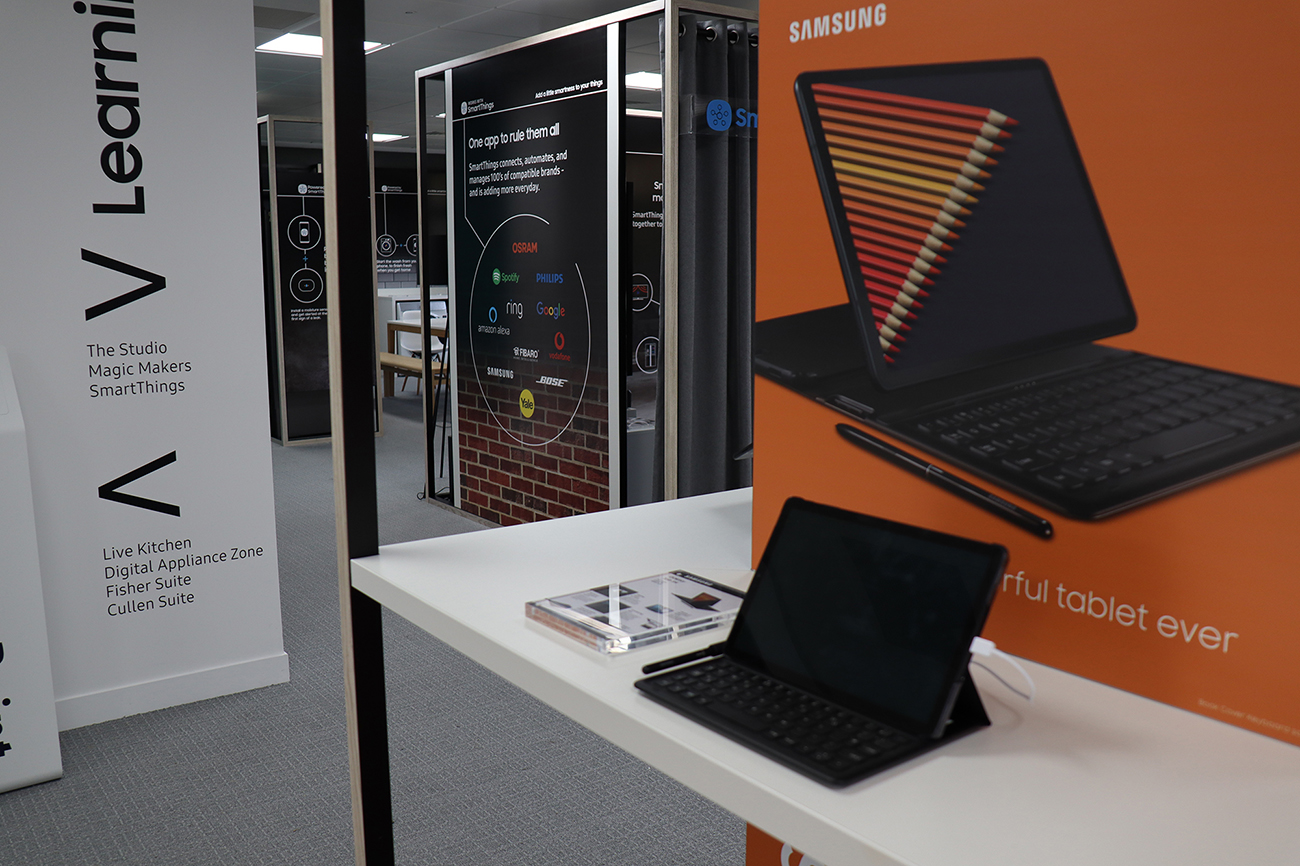
Samsung retail training centre
For Samsung, training retail associates on the history of the Samsung brand as well as on the latest products and technologies is core to success.
Displayplan designed this engaging 750 square metre technical training destination for Samsung retail sales associates across two floors.
Key experience features:
- Modular walls allowing training programme managers to create custom room sets to showcase Smart devices within a fully realised ecosystem
- Visitors are immersed in the 50-year history of Samsung
- At the same time they can experience and interact with the full range of Samsung products in a carefully recreated real world setting.
In summary
Retail displays designed to offer hands-on, educational, or retailtainment experiences like the ones showcased here perform in a variety of ways.
They appeal – in one way or another – to the senses and emotions of the target shopper, whether the child whisked away to the land of My Little Ponies, or the parent who wants to touch and feel different nappy/diaper products.
In each case, the opportunity is there for the shopper to engage with the brand, to experience the product to become invested in it.
This experience is key to nurturing brand engagement, conversion and, in the longer lifecyle of the product, loyalty.
In summary, it’s about retail experiential performance that generates retail sales performance.
Producing end-to-end retail display solutions that perform – without the drama
Speak with one of Displayplan’s Retail Display Specialists today about your experiential display goals on 01462 88 6000 or email info@displayplan.com.